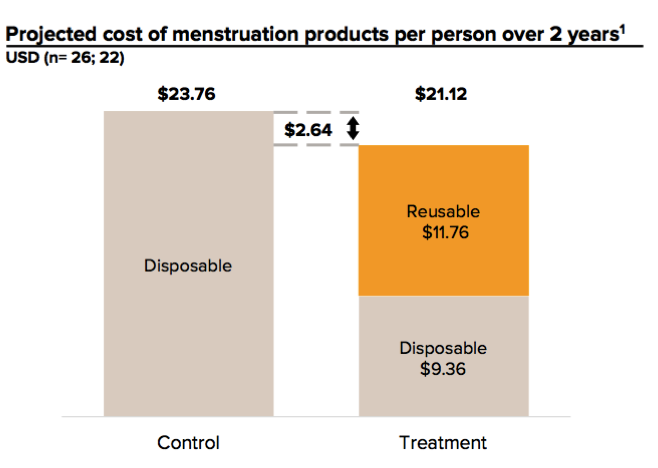
We recently conducted small-scale research in a middle school in East Sumba to investigate whether reusable menstrual pads had any impact on school attendance. While we found that girls in this area missed fewer school days because of menstruation than we expected, we did gather several other interesting insights.
With the average current expenditure per period in east Sumba being only us$0.99, the current retail price of reusable pads (us$2.35) in eastern Indonesia remains too high to make economic sense.

The control group refers to female students who used disposable pads, which is the common practice in Sumba. On average, they spent US$0.99 per month for the pads or US$23.76 in 2 years. The treatment group, on the other hand, refers to the students who received 5 reusable pads valued at US$ 11.73 that last for 2 years. While they were using the reusable pads, they were still spending 0.39 cents per month for disposable pads as a back-up. This amounts to US$21.12 for the treatment group over 2 years.
According to these results, students who were given reusable pads are projected to save only US$2.64 over two years, compared to those who exclusively use disposable pads. These savings are unlikely to offer a strong incentive for women and girls to make the switch to reusable pads.
This is especially true when we consider the upfront investment required - up to US$12.00 - for a set of five reusable pads that will only pay off in about 21 months, versus the option of buying disposable products incrementally over the same timeframe. This was confirmed when we asked the girls who tried the pads if they would be willing to buy a single pad following the trial. Despite a 95% satisfaction rate, only 60% expressed willingness to buy the pad at the retail price. We can assume that the proportion would be even smaller for a five-pad purchase. This makes sense in an area where the average monthly household income is around US$60, US$12 is a significant amount of money for many girls or their families to find.
So do we then conclude that there are no benefits from the introduction of reusable pads in rural Indonesia? No, we don’t!
USING DATA FROM OUR RESEARCH WE HAVE ESTIMATED THAT REUSABLE PADS CAN ELIMINATE UP TO 175KG OF MENSTRUAL PRODUCT WASTE OVER ONE WOMAN’S LIFETIME.
So while these reusable pads may not be economically attractive at the current price, given that waste management is one of the most pressing issues facing Indonesia, especially in rural areas, this environmental benefit is very promising.
Have you seen evidence of reusable menstrual hygiene products creating economic savings or environmental benefits in the last mile? We'd love to hear from you.
2 “Socio-economic gender baseline survey - Sumba iconic island”; Hivos; 2013; retrieved from hivos.org


